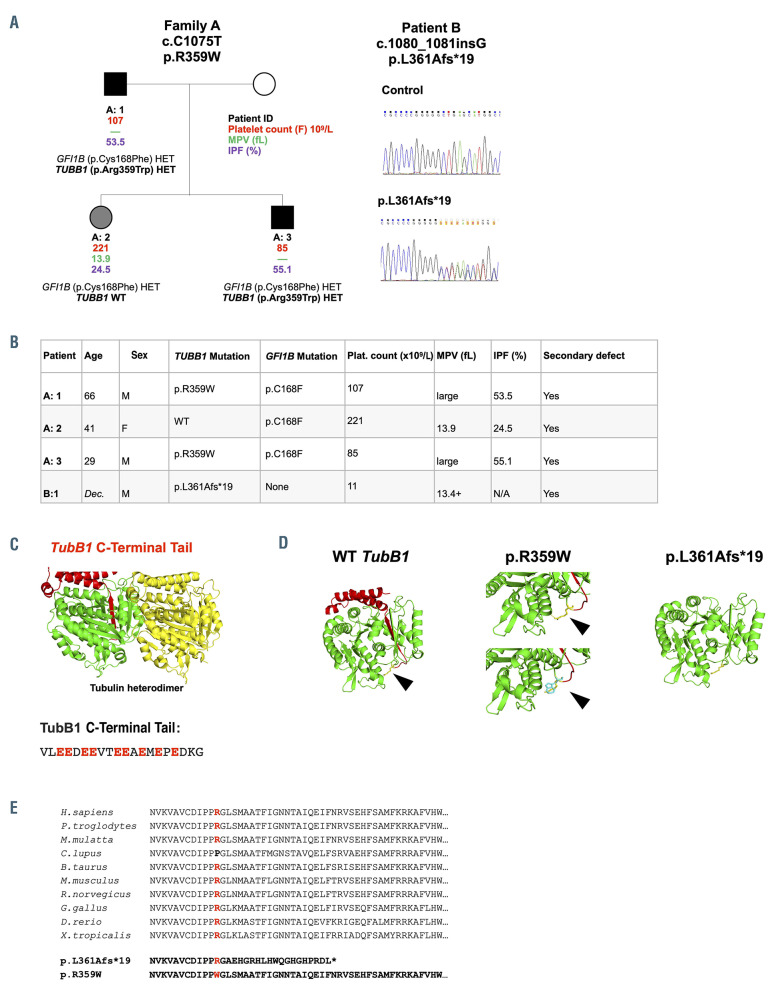Figure 1.
Candidate TUBB1 variants and their hypothesised effect on the C-terminus of b1-tubulin. (A and B) Two unrelated families were identified as carrying genetic variations in the TUBB1 gene within six base pairs of one another. The first, family A, is comprised of three individuals, two of whom carry an arginine to tryptophan (p.R359W) coding variant. Interestingly, all three individuals in family A harbor an additional GFI1B variant. However, the individuals with the reported TUBB1 variant (A:1 and A:3) present with a macrothrombocytopenia and high immature platelet fractions (IPF), while the patient without the R359W TUBB1 variant presented with a normal platelet count. The second family is comprised of a single individual, recently deceased, with a frameshift variant six base pairs from the missense change reported in family A. In this individual’s case, the insertion of a guanine nucleotide results in a frameshift with a premature stop codon 19 amino acids from the leucine to alanine change. Platelet count normal range 147-327x109/L, (n=40), mean platelet volumes (MPV) normal range 7.8-12.69 fL (n=40), immature platelet fraction (IPF) normal range 1.3-10.8% (n=40). (C) The C-terminal tail is downstream of both genetic variants in these families, and projects away from the dimer:dimer interface. The C-terminal sequence of TUBB1 is rich in glutamate residues which can be targeted for polymodification. (D) Based on homology modeling of TUBB1, we predict that the missense variant reported in family A is likely to affect the fold of the C-terminal tail, while the frameshift causes a truncation of this region. (Black arrows indicate the position of the R359 residue). (E) The arginine residue substitution in family A is highly conserved across species, as are sequences adjacent to the frameshift in patient B.

